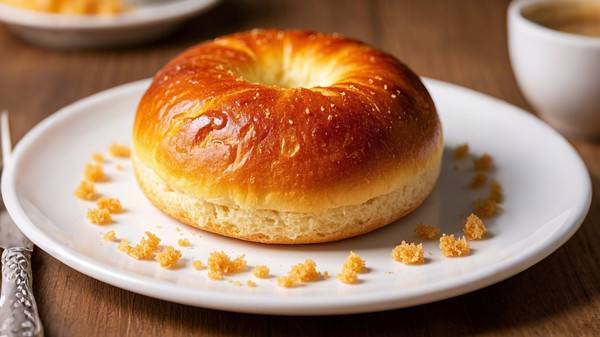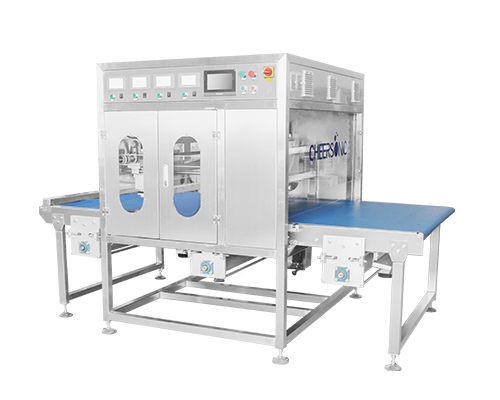How to make delicious bread?
Nowadays, more and more people have fallen in love with bread and jokingly call themselves “bread heads”. With the deepening of their love for bread and the overwhelming tutorials on various APPs, many friends have begun to get excited and try to make bread by themselves. However, for baking beginners, making bread is not an easy task. Many friends often fail but can’t find the problem.
So today we will share some practical knowledge points about bread making in response to questions from some friends in the background. If you master these key elements, you can also become a bread expert!
01 Choose the right flour
To make delicious bread, we should choose high-gluten flour, which has a protein content of more than 12%. If the protein content in the flour is insufficient, the dough will find it difficult to form enough gluten, which will affect the expansion of the bread. The higher the protein content, the higher the water absorption of the flour, and the final bread will have a more elastic texture and taste more delicious.
02 Choose the right yeast
It is recommended to use high-sugar tolerant yeast, which is a specific type of dry yeast that can effectively promote the fermentation of the dough. This yeast is particularly suitable for bread recipes with a sugar content of more than 7%. Normally, the amount of yeast added should be controlled between 2% and 3% of the total flour. In winter, due to the low temperature, the amount of yeast can be appropriately increased by 0.5 grams to ensure that the dough can ferment better.
03 Reasonable liquid ratio
When making bread, the amount of liquid added is usually 60% of the flour, but it can also be appropriately adjusted to about 70% according to the water absorption performance of the flour. At the beginning, you can add water equivalent to 60% of the flour, and then add water appropriately according to the softness and hardness of the dough.
Regarding the conversion of liquid in the bread recipe, we need to calculate according to the water content of each material. For example, since the water content of milk is 87%, if we want to replace 100 grams of water with milk, we need to use 100 divided by 0.87, and the required amount of milk is 115 grams. The same conversion method can also be used for other liquid materials.
04 Pre-softening of butter
In order to speed up the softening process of butter, a practical trick is to cut it into small pieces. When butter is cut into small pieces, its surface area increases, so it can soften faster. The standard for softened butter is that when you press it lightly with your fingers, the butter should be soft and easy to sink. It should be noted here that softening is not the same as melting, so the degree of softening needs to be controlled.
05 Types and amounts of sugar
When making bread, sugar is an important ingredient, and its types vary, including white sugar, honey, brown sugar, and maple syrup. The amount of sugar added can be flexibly adjusted as needed, usually ranging from 0 to 20%. The amount of sugar used varies for different types of bread. For example, European bread usually does not add sugar, the amount of sugar used in toast bread is about 10%, and the amount of sugar used in sweet bread is as high as 15-20%. In addition, sugar can not only increase the softness of bread, but also effectively slow down the aging of bread. Therefore, when making small breads that are easy to age, the amount of sugar can be appropriately increased to extend its shelf life.
06 Suitable fermentation conditions
In the process of bread making, the fermentation link is crucial. The ideal temperature for primary fermentation should be controlled at 26-28℃, while maintaining 75%-80% humidity. Secondary fermentation is suitable for temperatures of 32-35℃ and humidity of 80%-85%. However, we need to note that we should not rely solely on time to judge whether fermentation is complete. More importantly, we should learn to observe the fermentation state of the dough. When the volume of the dough doubles and the dough rebounds slightly after poking a hole with a finger dipped in powder, it is suitable for fermentation. If the dough does not rebound after poking a hole, it indicates that the fermentation is over-fermented; conversely, if it rebounds too much, it means that the fermentation is not sufficient.
07 Secondary fermentation
Many breads have undergone a secondary fermentation process, which makes the bread more mellow in flavor, softer in taste, and stays fresh longer, and ages more slowly. Of course, in order to save time, you can also choose to only perform basic fermentation, but the bread made in this way should be eaten as soon as possible to avoid it becoming dry and hard.
08 Bread surface treatment
Cutting the bread: This step is not necessary, but by cutting the bread, we can better control the surface crack morphology of the bread after baking, and create a unique appearance for the bread.
Brushing: In order to improve the glossiness of the bread surface after baking, we sometimes choose to brush the surface as an additional step, usually using egg liquid as the brushing material.
Sprinkling sugar on the surface of the bread can make the baked bread have a caramel taste and make the color of the bread more attractive.
UFM2300 Ultrasonic Cake Bars Cutting Machine, this is a custom machine designed for continuous supplied product to cut cake bars and loaf products into slices. The machine can be configured to cut from 1-10 loaves side by side automatically depending on width of product. The blade frame can be fitted with 4 ultrasonic blade system to cut fresh and sticky products. This machine has high cutting efficiency and can cut products up to 1 meter wide and can produce 1200 Loaves per hour.
- Average speed: about 600-1200 products per hour
- Friendly and easy operation
- Reliable and durable ultrasonic machine
- Increased quality and labor saving enhance capacity
- Improved portion quality and consistency
About Cheersonic
Cheersonic manufactures the leading portioning equipment for bakeries producing fresh and frozen desserts. Since 1998 bakers have used Cheersonic machines to cut, slice and portion cheesecake, pie, layer cake, loaves, butter, cheese, pizza, sandwichs, and more. Cheersonic offers ultrasonic cutting solutions that support start-up bakeries and high production commercial facilities alike. Small standalone machines can be used in manual baking facilities and large inline robotic solutions aid in high speed production.
Cheersonic offers many ultrasonic slicing models, both inline and offline applications, with production speeds of 80 to 1,500 cakes or pies per hour.
Cheersonic’ latest offline introductions include ultrasonic cutting with or without divider inserts between each slice. This improves the quality of the cut and makes for a much better product presentation for the customer. In addition, robotic arm improves the speed, efficiency, and accuracy of the cutting process, producing professional looking products every time.
Chinese Website: Cheersonic Provides Professional Ultrasonic Cutting Solutions



